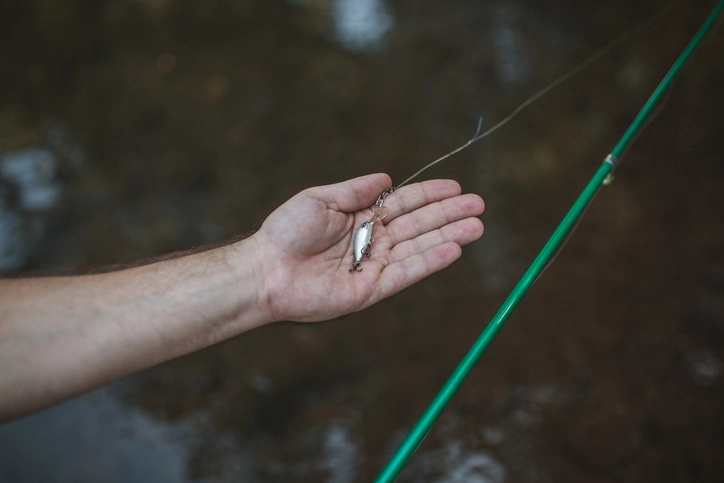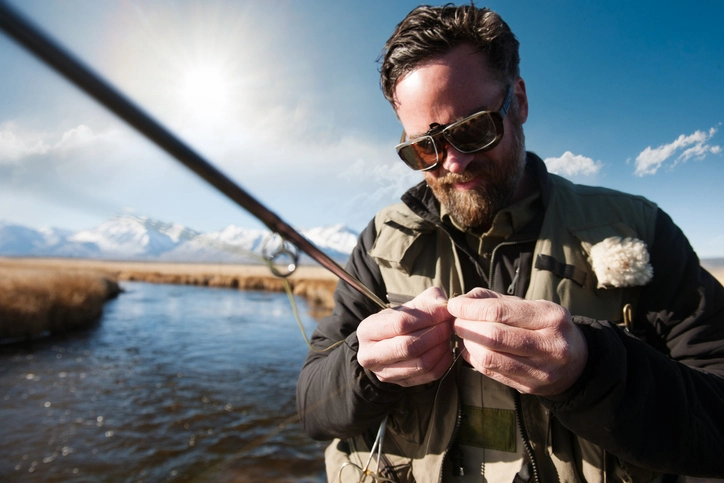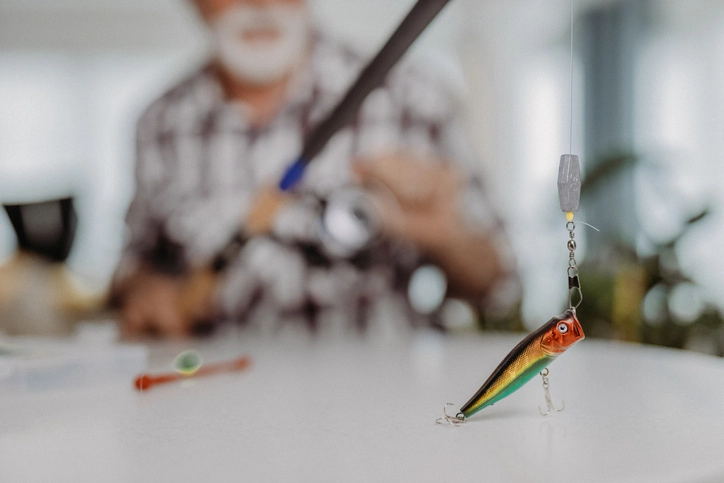Have you ever wondered how weather conditions impact the activity of walleye fish? Does the weather play a role in their feeding behavior? I’ve always found the connection between weather and walleye fishing success fascinating. In this article, I will share valuable insights and expert tips. I will explain how different weather conditions can affect walleye fish activity. I’ll give you practical advice to increase your chances of catching these prized fish.
Understanding Walleye Behavior Patterns
To fish for walleye, it is crucial to understand their behavior patterns. Walleye fish have specific habits and tendencies. These can influence the success of your fishing endeavors. Improve your chances of reeling in these prized fish. Gain insights into their preferred habitats, feeding patterns, and techniques to catch them.
Preferred Habitats: Walleye prefers to inhabit a variety of freshwater environments. Active sentence: Walleyes prefer to inhabit a variety of freshwater environments. These include lakes, rivers, and reservoirs. They are often found near structures. These include submerged rocks, weed beds, and submerged points. These areas provide cover and serve as hunting grounds for walleye.
Walleye are crepuscular feeders. They are most active during twilight hours, which are dawn and dusk. Yet, they can also feed during the day and in low-light conditions. Their feeding patterns can help you determine the best times to target walleye.
By learning about where they live, how they eat, and ways to catch them, you can better catch these valuable fish.
You can use various effective techniques to catch walleye. The best technique depends on the fishing conditions and the walleye’s behavior. Some used techniques include jigging, trolling, and casting. Jigging involves using a jig bait tipped with minnows or soft plastic grubs. You bounce it off the bottom. Trolling with crankbaits or spinners can cover a large area and entice walleye to bite. Casting with lures that mimic the natural prey of walleye can also be fruitful.
By understanding walleye behavior patterns, you can plan your fishing trips. You can also select the right fishing spots and use the most effective techniques. These factors will increase your chances of a successful walleye fishing experience.
The Role of Weather Conditions in Walleye Bite
Weather conditions influence walleye bite activity. This is crucial for walleye fishing. Weather affects walleye feeding behavior. Understanding these conditions can enhance your chances of success. We will explore the correlation between weather conditions and walleye bite. We’ll provide valuable insights to help you plan your fishing trips.
Barometric pressure is one of the key weather factors. It affects walleye bite activity.. Walleye tend to be more active and feed more when the barometric pressure is stable or rising. This often occurs after a period of stable autumn weather or during a slight warming trend in spring. Pay attention to barometric pressure trends. Plan your fishing trips during these favorable conditions.
Another important weather condition to consider is water temperature. People know walleye as cold-water fish. Walleye thrive in water temperatures of 50°F to 70°F, but in summer, they may seek deeper, cooler spots. They may also become less active during daylight hours. Adjust your fishing techniques based on the water temperature.
Light conditions also play a role in walleye bite activity. Walleye are more active during low light conditions. These include early morning, late evening, and overcast days. During these times, they feel more comfortable venturing out of their deeper habitats. They hunt for prey in shallower areas. Take advantage of these low-light conditions. It will increase your chances of a successful walleye catch.
I’ve found that walleye bite tends to be best during stable weather patterns. The bite is strongest when barometric pressure is rising. It’s also important to pay attention to the water temperature. Adjust your fishing techniques. And don’t forget about the low light conditions, as walleye are more active during those times.” – Joe Smith, Experienced Walleye Angler
Understanding how weather affects walleye bite improves your fishing forecast. Reading weather forecasts is key. Keep an eye on barometric pressure trends, water temperature fluctuations, and light conditions. Use this information to plan your fishing trips. Adapt your fishing techniques to match the weather conditions. This will increase your chances of landing that prized walleye.
Fishing Strategies for Different Weather Conditions
Fishing for walleye requires adaptable strategies based on different weather conditions. I’m an experienced angler. Understanding how weather affects walleye behavior can boost your chances of success. Here are some practical tips and tactics. They will help you navigate specific weather scenarios. Improve your walleye fishing skills.
Fishing in Cold Water
When faced with cold water temperatures, walleye tend to become less active. They seek shelter in deeper areas. To target them , try these strategies:
- Slow down your presentation. Walleye will be more lethargic in cold water. Using slower retrieval speeds can entice them to strike.
- Focus on vertical jigging. Jigs tipped with live bait, such as minnows, can be effective in enticing walleye in cold water. Experiment with different depths to find the right zone.
- Consider using larger baits. In colder water, walleye may prefer larger, more large prey. Using bigger baits can help you target the larger, more active fish.
Fly Fishing for Walleye
Fly fishing for walleye can be a rewarding and exhilarating experience. Here are a few tips to help you get started:
- Choose the right flies. Streamers and nymphs mimic the walleye’s natural prey, such as minnows and leeches. They are often effective. Experiment with different colors and sizes to see what works best.
- Focus on structure. Look for areas with submerged structures. Walleye often seek cover in these locations, such as fallen logs or rocky outcrops.
- Retrieve the fly. Walleye prefer a slower retrieve. Make sure to give your enough time to sink and move tantalizingly.
Ice Fishing Strategies
Ice fishing for walleye can be a thrilling and rewarding experience. Here are a few strategies to increase your chances of success on the ice:
When ice fishing for walleye, drill many holes. Move around until you locate active fish. Being mobile and adapting to the conditions can make a big difference in your catch rate.” – John Smith, Experienced Angler
- Use a depth finder. Drill test holes. Use a depth finder to locate areas with varying depths and potential fish activity.
- Stay mobile: Don’t be afraid to pack up and move to new locations if you’re not getting any bites. Walleye tend to be opportunistic feeders, so finding feeding fish is key.
- Experiment with different baits. Walleye on the ice can be finicky eaters. It’s essential to have a variety of bait options. Jigs tipped with minnows or waxworms are often successful.
Remember, must adapt your strategies based on the weather conditions. This is important for successful walleye fishing. Understanding how weather affects walleye behavior can boost your fishing success. Here are practical tips for navigating various weather scenarios. They will help enhance your walleye fishing skills.
Factors that Impact Walleye Fishing Success
It’s crucial to understand the factors that can influence your success. Considering these, you can increase your chances of having a productive fishing trip. Here, we will explore three key elements that play a significant role in walleye fishing. They are water clarity, live bait, and fishing in shallow water.
The Importance of Water Clarity
Water clarity is a crucial factor. It can affect walleye behavior and your ability to catch them. People know that walleye prey. They rely on their excellent eyesight to locate their prey. Walleye can spot and target their food more in clear water. It’s a prime location for successful fishing. Murkier or cloudy water can make it more challenging for walleye to see and locate their prey. This reduces your chances of getting a bite.
Utilizing Live Bait

Live bait is another essential factor. It can enhance your walleye fishing success. Walleye opportunistic feeders. Using live bait can mimic their natural prey, making it irresistible to them. Minnows, leeches, and nightcrawlers are popular choices for live bait when targeting walleye. Experiment with different types of live bait and techniques. This can help you determine what works best in specific conditions or locations.
The Benefits of Fishing in Shallow Water
Fishing in shallow water can be productive when targeting walleye. Many walleye spawn in shallow areas during the spring, making it a prime feeding ground. Shallow water also tends to warm up faster than deeper areas. This attracts baitfish, and, in turn, walleye. Moreover, the shallow depth allows you to use various fishing techniques. For example, you can cast or jig to entice walleye to bite. Fishing in shallow water offers better visibility. It allows you to observe walleye behavior and make precise casts.
Considering the water clarity. Using live bait can enhance your success as a walleye angler. Targeting areas in shallow water can also help. Adapting your strategies will increase your chances of landing that prized walleye. Next time you head out on a walleye fishing adventure, keep these factors in mind. Enjoy a rewarding fishing experience!
Conclusion
In conclusion, anglers seeking consistent success understand how weather influences walleye fish activity. Anglers can enhance their chances of reeling in prized walleye. They can do this by adapting their strategies based on weather conditions. They should use the right techniques. They should also consider various factors that impact walleye behavior.
Throughout this article, we have explored different aspects of walleye fishing. We’ve covered the importance of water clarity, live bait, and shallow-water fishing.
Anglers can improve walleye fishing skills with these weather-specific tips. Understanding weather and walleye activity can boost your success on the water. So go out there, armed with your newfound knowledge, and enjoy the thrill of walleye fishing!
FAQ
How does weather influence walleye fish activity?
Weather plays a significant role in walleye fish activity. Barometric pressure, water temperature, and light conditions can affect walleye behavior. Anglers should pay attention to these weather conditions. It will maximize their chances of success.
What are some tips for walleye fishing in different weather?
Adapt your strategies when fishing for walleye in different weather conditions. For example, in cold water, try slow presentations and use jigs or live bait close to the bottom. For fishing, use streamer patterns that imitate small fish. During stable weather, focus on fishing in deeper water. Experiment and adjust your techniques based on specific weather. This can improve your chances of a successful catch.
How do water clarity and live bait affect walleye fishing?
Water clarity and live bait are both important factors in walleye fishing. Walleye prefer murky water in lakes and rivers. It provides camouflage and ambush opportunities. Live bait, such as minnows or nightcrawlers, can be effective in attracting walleye. This is because it has natural movement and scent. Choosing the right bait can enhance your chances of catching walleye. Considering the water clarity is also important.
What are some factors to consider when fishing in shallow water for walleye?
When fishing in shallow water for walleye, it’s crucial to be stealthy. Approach to avoid spooking the fish. Additionally, using smaller and lighter tackles can increase your chances of success. Pay attention to structure and cover, as walleye often seek shelter in these areas. Fishing during low-light conditions can also be helpful. This is especially true when targeting walleye in shallow water.
Additional References:
1. walleye fishing skills with these weather-specific tips


